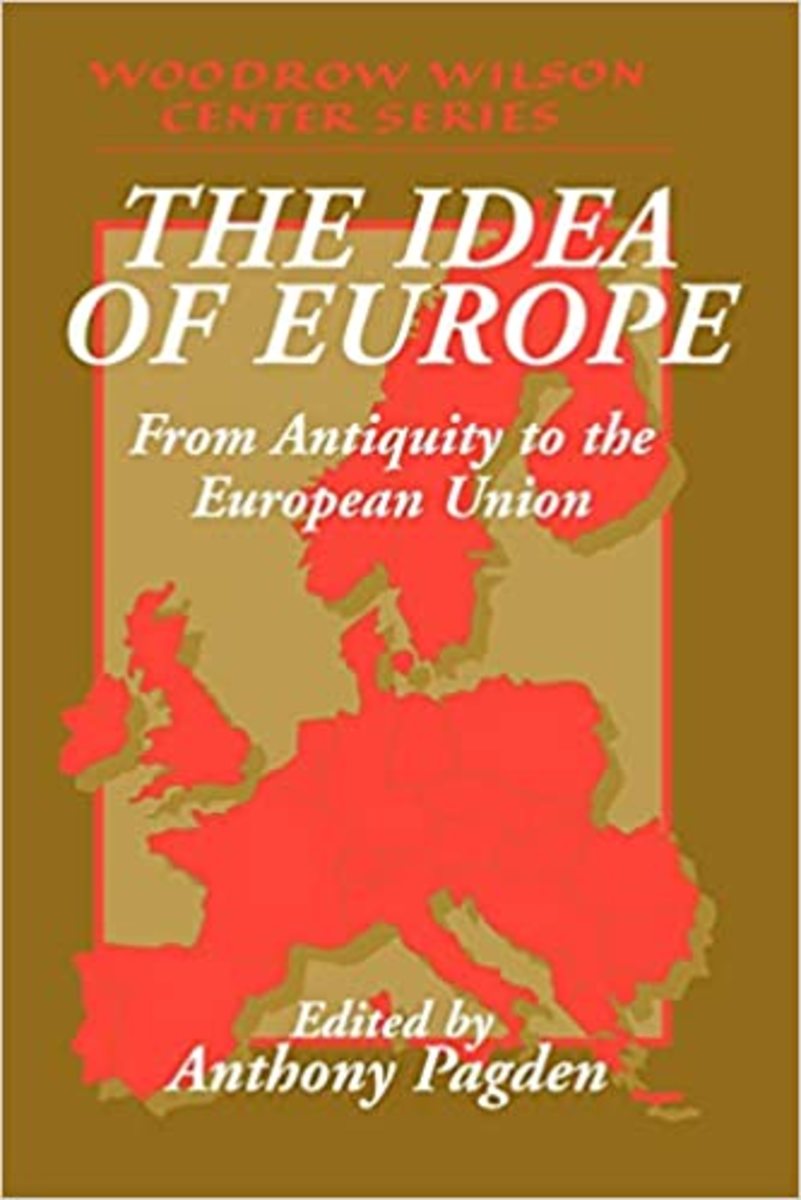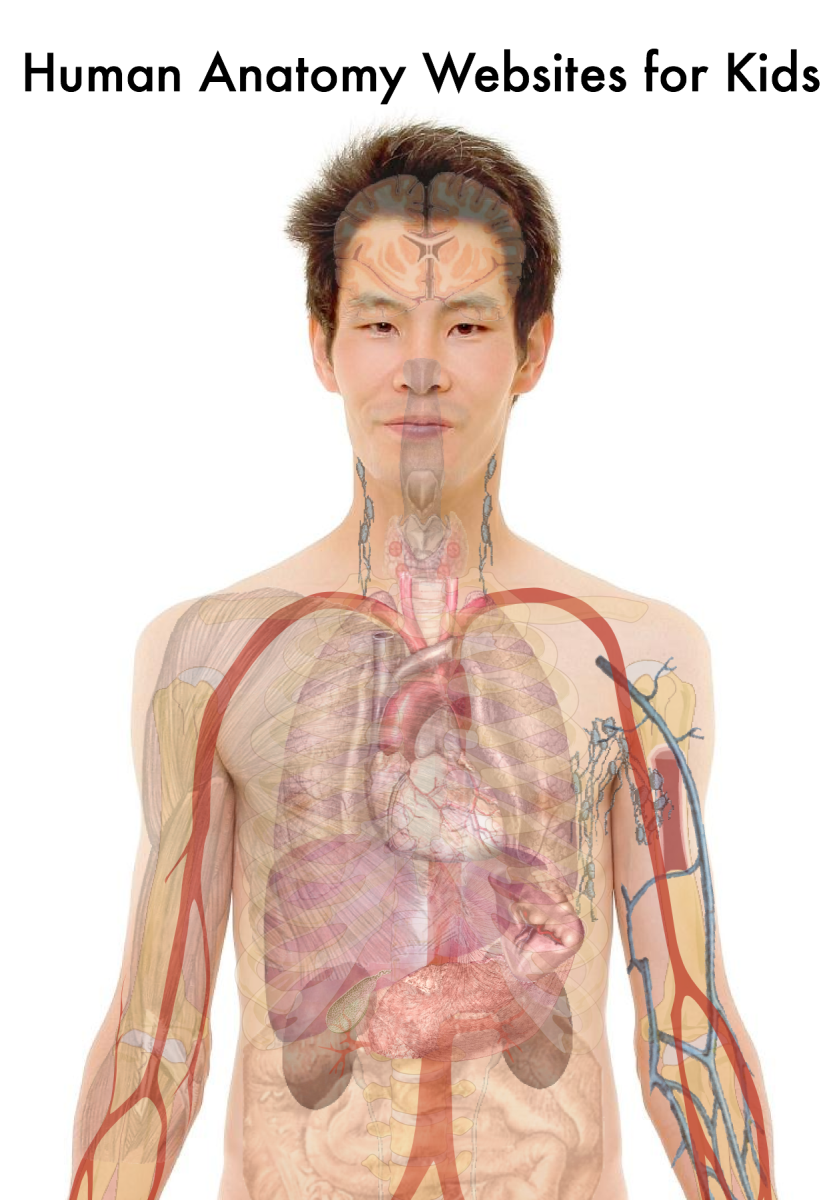What is Aculturation?

Article on Aculturalation
ABSTRACT
The purpose of the study was to elucidate the concept of Diffusionism and acculturation. We have carried out an over view on acculturation, keeping in view the perspective of various models of acculturation – john Berry’s model of acculturation, the melting pot model, intercultural interaction model. More over we have presented a comprehensive summary of the current status of acculturation research, based on four pillars; social cognition, cultural dominance, social identity, social dominance, social stigmatization. Secondly, we have illustrated the concept of Diffusionism on the basis of Marx and Eurocentric Diffusionism. Lastly, we have explained that how Diffusionism and acculturation stand together.
Table of contents
Introduction……………………………………………………………………………..4
Acculturation …………………………………………………………………………...4
Acculturation, social identity and social cognition………………………………… 7
Models…………………………………………………………………………………...9
John berry model of acculturation ………………………………………………..... 9
The melting pot model………………………………………………………………...10
Intercultural interaction model……………………………………………………......10
Diffusionism…………………………………………………………………………......11
Marxist and Eurocentric Diffusionism………………………………………………...12
Introduction ……………………………………………………………………………..12
Euro Marxism…………………………………………………………………………....12
Euro centrism…………………………………………………………………………....12
The rise of capitalism…………………………………………………………………...13
Colonialism…………………………………………………………………………….....14
Imperialism……………………………………………………………………………......15
Diffusionism and acculturation………………………………………………………....16
References …………………………………………………………………………….....17
INTRODUCTION
Acculturation
Acculturation refers to the adaptation process experienced by individuals or groups when settling into an unfamiliar culture. Whereas some migrating groups may seek to integrate with the host culture, others may choose to maintain their cultural roots and separate themselves from the “new” dominant culture. In a world where both temporary and permanent migration continues to increase it is vital to understand the challenges faced by such individuals and the strategies they employ to survive. Whereas previously migrating groups were not considered as viable segments to target with products and services, increasing immigrant numbers have alerted marketers to the potential profitability of these groups.
Since the term acculturation was first formally used by Robert E. Park in 1928 to describe the adaptation of immigrants, the earliest attempts at understanding the acculturation process were conducted in the fields of anthropology and sociology. However, since the 1980s business researchers have shown greater interest in the concept in light of the increasing market value of various immigrant groups. As many of the most prominent acculturation researchers were located in North America, empirical work concentrated on the large numbers of Hispanic immigrants who sought to settle in the United States. Today, the emphasis of most research is still on groups moving away from lesser-developed nations, though researchers have broadened their focus to encapsulate a wider array of migrating groups, including Chinese workers moving to Australasia, Eastern Europeans fleeing their home nations due to civil war, and Italians migrating to Canada.
The Process
Acculturation typically occurs when two or more cultures are brought into continuous, firsthand contact (be it on an enforced or voluntary basis). The triggers for such cross-cultural interaction have included political unrest between nations, invasion, or even enslavement. More recently, acculturation has also been triggered by international trade agreements, educational or missionary activity, and transnational media. Acculturating groups face a number of obstacles in adapting to a new way of life and these can be particularly challenging in the early stages of their acculturation. Depending on the migrating group, these problems can include language difficulties, financial hardship, homesickness, loneliness, discrimination, and in some cases outright racial abuse. Historically, acculturation has been seen to be a four-step process that includes both positive and negative emotions for an immigrant:
♦ Honeymoon: Soon after migration, the immigrant enjoys a fascination with the host culture, where there is little firsthand contact or conflict.
♦ Rejection: In time, the immigrant may feel some homesickness and start to unfavorably compare the host culture with their previous life. This can result in negative and aggressive attitudes to their new home.
♦ Tolerance: In time, the intensity of these emotions will lessen and the immigrant will begin to acquire the skills and knowledge needed to survive in the new environment.
♦ Integration: The immigrant develops a confidence in the new culture, conflict decreases, and the new home becomes “another way of life.”
Although each individual’s experiences will vary, the above process does provide insight into the sorts of emotions experienced by immigrants upon arrival in an unfamiliar culture. The following discussion focuses on two models that describe strategies employed by immigrants to deal with the process.
Factors Influencing Acculturation
Group Level Factors
On group level health status ,economic changes, social changes and cultural changes ranging from relatively superficial changes in what is eaten or worn to deeper ones involving language shifts religious conversation and value system.
Individual Level Factors
Factors like age, gander, education and economic status are influencing factors. Females are more at risk than males.
Level of Difficulties of Individual’s During Acculturation
- Psychological changes or “behavioral shifts” this requires “cultural shedding”- (the unlearning of aspects of one’s previous repertoire that are no longer appropriate)
- Cultural shock or acculturative stress-Culture shock refers to the anxiety and feelings (of surprise, disorientation, uncertainty, confusion, etc.) felt when people have to operate within a different and unknown culture such as one may encounter in a foreign country.
- It’s not cultural but intercultural residing in the process of acculturation.
When major difficulties are experienced, then the “psychopathology” or
“Mental disease” perspective is most appropriate. Here, changes in the cultural context exceed the individual’s capacity to cope, because of the magnitude, speed, or some other aspect of the change, leading to serious psychological disturbances, such as clinical depression, and incapacitating anxiety.
Examples of Acculturation
Some examples of acculturation:
- A first generation Italian who lives in an Italian enclave in the United States may continue to speak just Italian and to follow the norms and mores of his Italian origins. This person will not have become highly acculturated to American culture.
- The granddaughter of a Chinese immigrant has gone to American schools and will now attend an American college. She spends time primarily with her American friends, dresses as they do and shares their values and interests. She has become highly acculturated into American culture.
ACCULTURATION, SOCIAL IDENTITY AND SOCIAL COGNITION
Overview of Acculturation Research
Throughout most of the 20th century, social scientists theorized about the process by which newcomers to America become incorporated into mainstream culture. This work was first the province of sociologists at the University of Chicago, with Robert Park the best known of the melting pot theorists. Robert Park is best known of the melting pot theorists. He under took the study of what happens to people of different cultures and languages when they come in contact with one another. He drew a three stage model- contact, accommodating and assimilation. According to the model contact between the people from different cultures forces them to seek ways to accommodate with each other to minimize conflict. According to anthropologists acculturation occurs when group of individuals from different cultures come into continuous contact with each other and subsequently there are changes in the original cultural pattern of either or both groups. Further more Redfield et al. model of acculturation explained the acculturation process as the change from one culture or unknown culture to known culture and the individual involved can select what elements of other culture they wish to surrender answer what elements they want to incorporate from new culture. Berry explained the process of acculturation on the basis of assimilation, integration, rejection and deculturation. His model recognized the importance of multicultural societies, minority individuals and groups and individuals have a choice how are they are willing to go into acculturation process.
Padilal’s model of acculturation focused on the preferences of individuals for the majority or minority cultures and the effect of such preferences on over all acculturation process but his model failed to explain why people choose one culture over another. To date no model has been advanced to explain how it is that individuals from the same educational, socioeconomic, generational and familiar backgrounds differ on willingness to acculturate. Choice to acculturate might be related to awareness, likeability, sociability, and extraversion and ego control.
A New Vision of Acculturation Research
To understand cultural adaptation from the perspective it is important to adopt new terminology and to see intercultural contact through a new social framework. To shed light on these processes, on this model will rely on the following constructs: social cognition, cultural competence, social identity, social dominance, and social stigma.
Social Cognition
Fiske and Taylor (1991) defined social cognition as “how ordinary people think about people and how they think they think about people”. In the theory of acculturation the tradition of pragmatism is being followed in social cognition research; that emphasizes the motivational and intentional basis of perception and cognition. Cognition processes stem from people’s pragmatic goals which are being derived from personal level variables, situational, constraints.
Cultural Competence
It refers to the learned ability to function in a culture in a manner that is congruent with the values, beliefs, customs and mannerism. When the members of the culture come to view the person as an insider then we can say that the person has attained complete competence. The important consideration is for the person to behave with in an acceptable cultural of normative behavior.
Social Identity
The social identity theory states that the individuals’ thoughts and behaviors are frequently determined and influenced by collective group membership. Thus individuals are not self contained units of psychological analysis. People think, feel and act as member of collective groups, institutions and cultures. This approach reinforces the idea that individual’s social cognitions are socially constructed depending on the groups and collective frame of reference.
Social Dominance
All social institutions, groups and cultures involve some form of hierarchy. This theory of intergroup relations rests on individual differences in social dominance. Individual orientation towards social dominance is pragmatic in so far as hierarchies are functional for the collective unit. Social hierarchies are validated through cultural ideologists such as legitimized social class and gender role.
Social Stigma
If other people’s reaction influences our behavior and identity then reasonable people try to control the reactions of others by manipulating what they reveal about themselves. Social stigma is a function having an attribute that conveys a devalued social identity in a particular context. The stigmatization is not linked to the person possess that attribute. The essential distinction is in the unfortunate circumstances of possessing an attribute devalued in the society. These attributes are generally associated with minority standing and powerlessness. Visible stigmas such as race, certain physical handicaps or severe malnourishment cannot be hidden. Thus the awareness that others judge on the basis of our visibility may influence our thoughts, feelings and behavior. Concealable stigmas such as sexual orientation, ethnicities etc. are not visible. Theses people can interact with others without there negative social identity but they know that they could be stigmatized if inner devaluing attribute is discovered. Although having a devalued social identity may create a challenge, in response the stigmatized individual can effectively depend there self esteem with affirming their identity with the group or other seek strategies to minimize their stigma.
MODELS OF ACCULTURATION
John Berry Model of Acculturation
John Berry’s model is based on the principles of cultural maintenance and contact-participation.
Principles
Cultural Maintenance- the extent individuals’ value and wish to maintain their cultural identity
Contact-Participation - the extent individuals value and seek out contact with those outside their own group, and wish to participate in the daily life of the larger society
John berry elucidated four characteristics of acculturation:
Characteristics
• Integrated individuals- Individuals want to maintain their identity with home culture, but also want to take on some characteristics of the new culture
• Assimilated individuals- These people do not want to keep their identity from their home culture, but would rather take on all of the characteristics of the new culture
• Separated individuals- They want to separate themselves from the dominant culture. Can be called segregation if it is forced separation
• Marginalized individuals- These individuals don’t want anything to do with either the new culture or the old culture
The Melting Pot Model
The melting pot is a metaphor for a heterogeneous society becoming more homogeneous and the different element melting together into harmonious whole with a common culture .it is particularly used to describe the assimilation of immigrants to united states .The melting together metaphor was in use by 1780s .after 1970 the desirability of assimilation and the melting pot model was challenged by proponents of multiculturalism who assert that culture differences with in the society are valuable and should be preserved ,proposing the alternative metaphor of the mosaic or salad bowl different culture mix but remain distinct
In18th and 19th century the metaphor of a melting pot was used to describe the fusion of different nationalities ethnicities and culture .it was a metaphor for the idealized process of immigration and colonization by which different nationalities, culture and races were to blend into a new virtuous community.
Intercultural Interaction Model
This model is basically about second language acquisition. According to this learner motivation for acculturation of language and culture passes through 3 levels of functionality.
- Instrumental (the tools a person uses)
- Integrative (the way he integrates it with the previous knowledge)
- Psycho Social Functional Level (the way he socializes it)
this model also tells that positive interaction experiences have been found to assist persons with developing communicated and cultural competent, and the level of functioning and individual adapts, which is evident between instrumental and integrative motivation, should recognizes as fundamental and equals determinant of language acquisition and acculturation.
DIFFUSIONISM
Diffusionism was popular in the early 1900s. There were two main centers for Diffusionist theory, one British and one German. The German school was led by Father Wilhelm Schmidt and Fritz Graebner. They believed that cultural traits diffused outward from a variety of cultural centers in circles to other regions and people. These culture circles were known as Kulturkreise. In the British version of Diffusionism, only one culture center existed from which all cultural traits were diffused. This cultural center was Ancient Egypt. The main proponents of this theory were G. Elliot Smith and William J. Perry. They both had studied Ancient Egypt extensively which resulted in their belief that Ancient Egypt was the only cultural center. Both of these groups felt that people who did not possess traits that were considered civilized had degenerated and lost those traits.
Diffusionism is, however, still important today. The concept of diffusion explains how some cultural traits are acquired or spread. Diffusionism also helps to explain acculturation. Diffusionism cannot explain all aspects of culture as early Diffusionists believed. There are examples of cultures in close contact that do not share many traits.
Diffusion refers to the spread of a trait or innovation outward from a source or from one culture to another. Diffusionism is the theory that cultural and technological innovation, in general, has spread outward from a small number of sources (or in extreme versions, from one source).
Although diffusion was originally promoted by Franz Boas as a way of contesting racial theories of societal development, the term later became associated with an updated set of racial and ethnocentric agendas that sought to trace civilization to particular racial homelands. Such theories reached a popular audience but proved marginal to anthropological debates, which had largely abandoned the link between race and culture, as well as the related problem of ranking human creative capacity. Contemporary work on cultural change has tended to integrate diffusion into a more synthetic perspective that includes flexible models of evolutionary processes and functionalist adaptations.
Marxism and Eurocentric Diffusionism
Introduction
Historical progress occurred naturally in the European part of the world and rest of the world received the fruits of progress by diffusion, socialist revolution will take place in the European world and socialism will spread it out of the world, this view is labeled as “Eurocentric” and “difussionists”, in the writing of Bernstein, bower, Hilferding, Kousky, and other major thinkers of the period. The European world was still seen as arena of historical changes, past and future and non-Europe as recipient of diffusion from Europe.
Euro Marxism
By the time of First World War, a few Marxist thinkers had begun to question the euro-centric diffusionist model like Luxembourg and Lenin. Then two Marxist school of thought on the matter of euro-centric diffusionism, one is euro Marxism, they believe in dominance of Europe in the past and present and its influence. The opposing school is “non-diffusionist” or “uniformitarian Marxism” denies these propositions.
Eurocentric Marxism
It origins back to the 16th century when Europe was conquering and exploiting the non-Europe world. In 19th century this model was built upon the flowing grounding propositions:
- Europe naturally develops and progresses;
- Non-Europe naturally remains stagnant, traditional;
- The main reason for Europe's progress is some intellectual or spiritual quality, some sort of rationality, which leads to technological and social invention and innovation;
- The main reason for non-Europe's non-progress is a lack of this rational quality;
- A secondary reason for Europe's superiority is its superior environment;
- The natural way that non-Europe develops is by accepting diffusions from Europe, consisting of new ideas and beliefs, commodities, settlers, and colonial domination;
- As partial repayment for these gifts, non-Europe naturally provides Europe with raw materials, plantation products, labor, and art objects
This two world sectors Europe n non Europe {or core n periphery} and interaction between them is consisted of diffusion. This explains why Europeans were superior to all others, world history was European history. Till European thinkers of 19th century accepted one or another form of this world model, Marx could not help doing so, since he has no evidence.
This detrain has not been abandoned in our own time, merely modified and softened, after world war II things have been changed, on European world also made some progress, have advanced in technology and socially but in slow pace and majorly by following European steps. The doctrine of Eurocentric diffusionism is now more important because it must persuade non-Europeans, who now have politically independence the proper way to progress out of poverty, is to accept European diffusion and domination.
The Rise of Capitalism
Marx was of the view that feudal mode of production was a strictly European phenomenon. Several other regions have been at one time or another was feudal societies. Amin and many other used a broader concept, the tributary mode of production. European feudalism was simply a regional variant of a tributary form. Eurocentric Marxist believed that feudalism was uniquely European. It has two forms, progressive European form anchored in rent and exploitation and non progressive European form anchored in taxation. Euro Marxist used this argument for Euro Marxist theory that capitalism could only have arisen from feudalism and since feudalism was unique to Europe, capitalism could not have arisen elsewhere.
Marx seconded that European history was explained in terms of prior facts of European history with no real attention to causal forces entering Europe. Others also seconded until there was a transition from feudalism to capitalism. Communism which led to the accumulation of people from Asia, Africa and Latin America resulted in internal social change. This was analyzed by Lenin and other non Europeans. Apart from the main debate which focused only on the internal rural and urban European forces for the transition, there were other participants who did sense that evidence was beginning to emerge about non European feudalism. Brenner was of the view that the alteration from feudalism from capitalism was entirely an inter Europe phenomena which commenced its spread from England. He negated the opinions of people against Euro Marxism who argued that the social transition was not because of the world scale phenomenon but intra Europe one. Furthermore Brenner argued that the dawn of capitalism brought with it a new kind of mentality, one that could lead to a new breed of advanced technology. Still there was other Euro Marxist who reasoned this technological process solely to the rationality and intellect of Europeans.
Colonialism
The euro-Marxist thought that the role of Europe in past social evolution, also about the role of Europe in present, from abstract theory to another one. In the 1700s and 1800s, many of the richer, more powerful European countries such as Britain, France, Spain, and the Netherlands established colonies in the continents of Africa, South America, and the Caribbean. We may recall Brenner's argument that, since capitalism arose as an intra-European phenomenon, today Europe, with its “historically developed class structures” remains the proper focus of attention. Some countries use colonialism to get more land for their people to live in. When countries are using colonialism to get more land for their people to live in, the country will help settlers move to the new region or territory. The local people living in the land or territories were usually moved away by using force and violence from armies. To protect these settlers from the local residents who were pushed aside, colonial nations often set up a military fort or colonial police system.
The Eurocentric Marxist theories of core- periphery connections, past and present, are similar to various versions of modernization theory, the form of modern Eurocentric diffusionism. Both argue that capitalism rose and developed in Europe, without outside help, and that development for the Third World today consists in the diffusion of capitalism outward from Europe.
Some of the basic propositions common to many theories in both groups seem to be the following: (1) European colonialism in the past was not of much significance for the development of Europe and European capitalism. (2) Colonialism did not under develop the peripheral regions (leaving aside the 16th-century holocaust in the Americas); it transformed them in various ways, some very painful, but in general it led them toward economic development and modernity. (3) Decolonization was a positive transformation, in a political sense, but the basic relationship between the European core and the newly independent countries of the Third World is, and (for some Euro-Marxists) should be, a continued diffusion of capitalist processes, including modern ideas and institutions and modern technology, as well as an even closer economic linkage between the core and the periphery than prevailed in colonial times. (4) These processes, collectively described as “globalization,” spread modern capitalism to the periphery and thus will erase the economic disparity between the two sectors. Euro-Marxists do not dispute the fact that colonialism had something to do with the development of capitalism in Europe but they minimize its significance.
Imperialism
Marxist theories focus on the modern world where there is no colonialism exists and Euro-Marxist gives view of Euro-centric model to the present world. They explain it by the help of “globalization” and “imperialism”.
Globalization theory says that when capitalism developed it provided benefits for the third world country. They became more industrialized and modernized and Euro-Marxist thought that the gap is closing but the industrialization might have some benefits like medical facilities which lead people to live longer but no increase in the salaries and rich become richer while poorer become more poorer.
Then the “Marxist theory of imperialism” says that capitalism leads towards destruction and there arises a question that is it effective in the third world countries. So, many Marxists believe that it is in some areas negative and in some areas it has positive effects. Some theorists favored and some rejected because of its Eurocentric approach.
DIFFUSIONISM AND ACCULTURATION:
Kroeber (1948) stated that acculturation comprises those changes in a culture brought about by another culture and will result in an increased similarity between the two cultures. This type of change may be reciprocal, however, very often the process is asymmetrical and the result is the (usually partial) absorption of one culture into the other. Kroeber believed that acculturation is gradual rather than abrupt. He connected the process of diffusion with the process of acculturation by considering that diffusion contributes to acculturation and that acculturation necessarily involves diffusion. He did attempt to separate the two processes by stating that diffusion is a matter of what happens to the elements of a culture; whereas acculturation is a process of what happens to a whole culture.
- Diffusionism is the process by which discrete cultural traits are transferred from 1 culture to another through war, migration, trade and other contact
- Diffusionism research originated in 19th century
- Diffusionism contributes to acculturation
- Its about what happens to element of culture
- Acculturation is an approach to understand how dominant cultural forms are imposed, invented, rebirth, and transformed.
- Acculturation studies in enriched the diffusionist approach in mid of 20 century
- Acculturation necessarily involves diffusion
- Acculturation is about what happens to whole culture
REFRENCES
Acculturation, Sociology Guide. Retrieved October19, 2010, http://www.sociologyguide.com/basic-concepts/Acculturation.php.
Asai, C. Dr. Erwin, Durham J., Halvorson A., & Holte S. (2006). Benefiting Multicultural Clients by Considering Acculturation. Counseling and Student Affairs, MinnesotaStateUniversity, Moorhead. North Dakota Counseling Conference. Bismark: North Dakota. Retrieved October19, 2010, http://www.pptsearch.net/download.php?fid=285373.
Blaut J. M., (1999). The Political Economy of Imperialism: Critical Appraisals,Marxism and Eurocentric Diffusionism (pp. 127–140).Kluwer Academic Publishers: Boston. Retrieved October19, 2010,http://www.hartford-hwp.com/archives/10/021.html
Cultures in the World; Diffusion and Acculturation. (n.d).Retrieved October19, 2010, http://vcampus.uom.ac.mu/soci1101/24cultures_in_the_world_diffusion_and_acculturation.html
Diffusion and Diffusionism, Retrieved October19, 2010, http://social.jrank.org/pages/1836/diffusion-diffusionism.html
Diffusionism, Retrieved October19, 2010, http://www.mnsu.edu/emuseum/cultural/anthropology/diffusionism.html.







